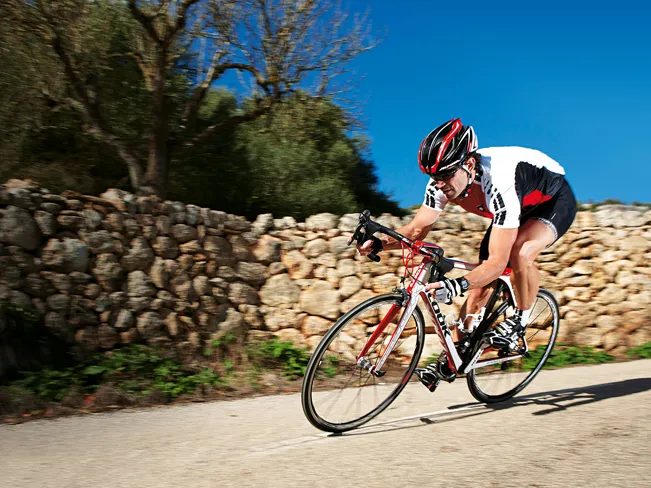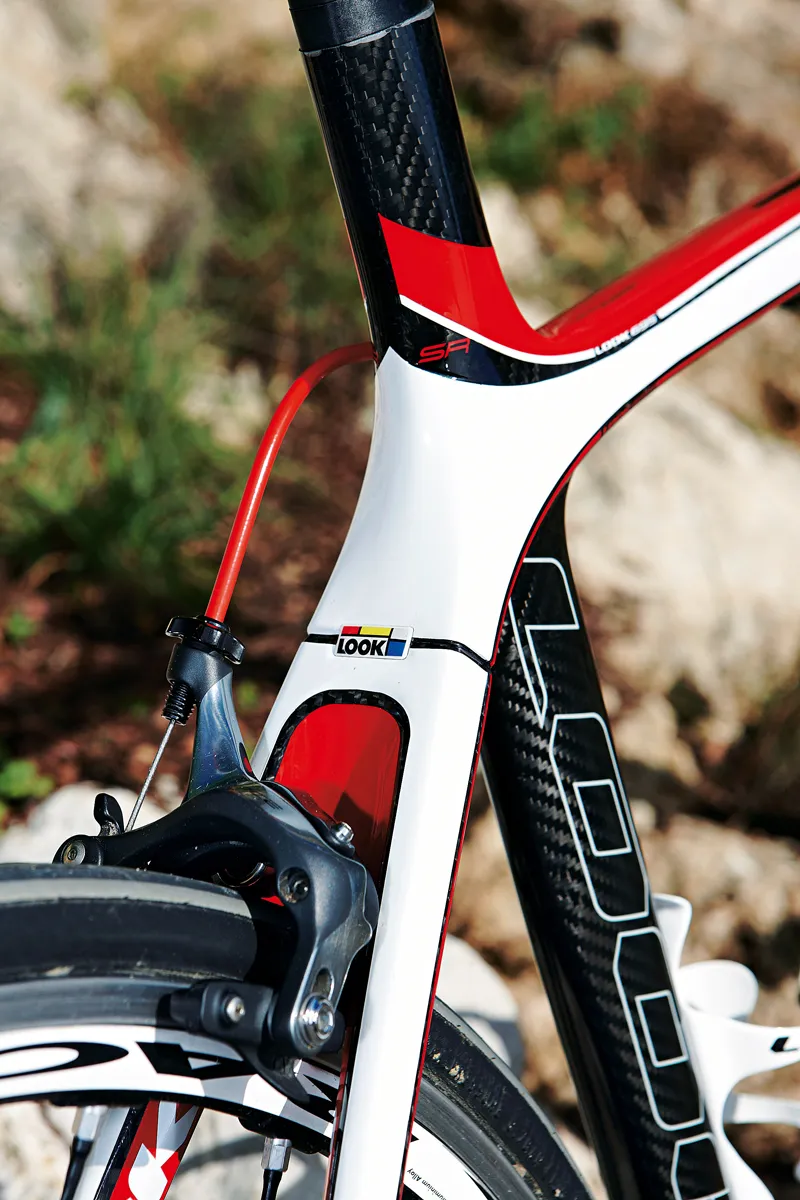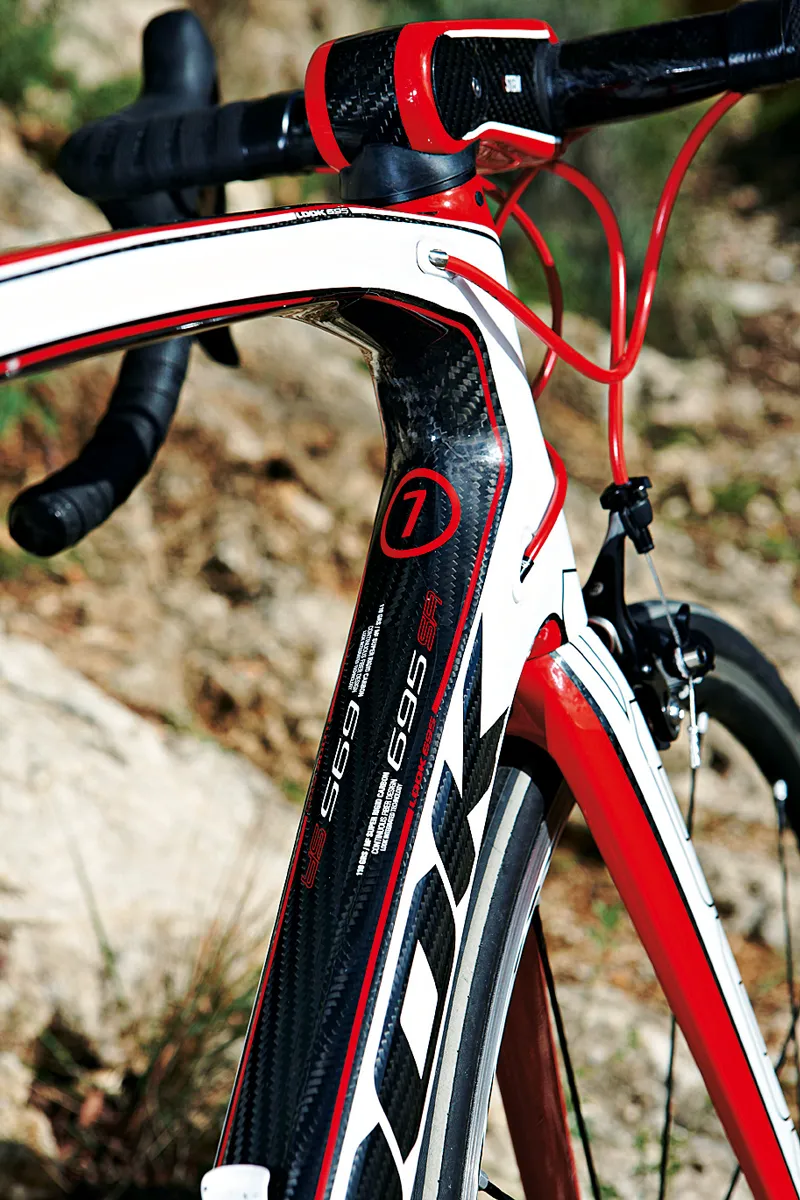Back in 2009 I tested the LOOK 595 that the Cofidis team were happily thrashing all over Europe at the time. This last summer, the team received the new 695 SR just in time for the Tour de France and ever since, I’ve been looking forward to riding one. When the chance came, it proved to be an ideal excuse to escape the cold German winter for a few days of riding in Mallorca.
The 695 SR features several innovations that are aimed at creating a more integrated bike – ZED2 cranks, C-Stem, E-Post, Head Fit3 – all of which I appreciated when I took it out of the box as they make the bike easier to set up.
The C-Stem fixes independently of the headset bearings which saves a lot of hassle if you need to turn the bars to load your bike in your car. It also has a crescent-shaped insert that sits in front or behind the bars to change the reach by 10mm for a finely-tuned fit. Its angle can be changed too.
One of my favourite technical aspects of the bike is the new, one-piece integrated ZED2 crank. it slots through the frame instead of bolting together so it’s much stiffer. There's only one length in production as LOOK have created a far smarter solution – a rotating three-lobe insert that offers 170, 172.5 and 175mm effective crank lengths using only an 8mm Allen key. Unlike the first ZED crank, this is now compatible with all pedals too.
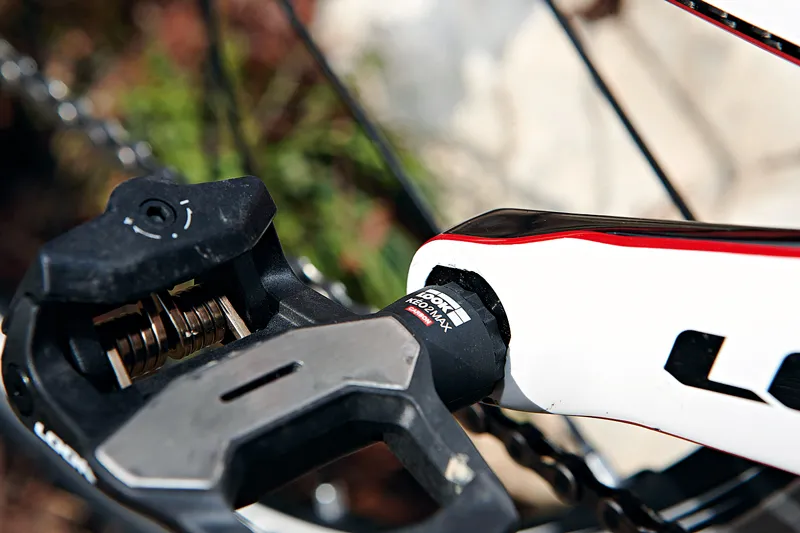
The saddle position had already been set for me so, instead of looking for a saw to cut the integrated seatpost, all I had to do was fit my pedals and pump up the Hutchinson Fusion tyres. Rolling out of the driveway, I loved the bike straight away. The seating position was perfect and taking the first corner on the way out of Cala Murada, I had a feeling that the super-rigid race machine and myself would easily become good friends.
Super-rigid is what the SR stands for – this model is extra-stiff for pro-level racing. The ‘regular’ 695 is 15 percent less stiff in all directions for a more compliant ride and it may prove to be the ideal choice for the Cofidis riders in the spring classics.
The SR uses LOOK’s patented E-Post, which allows you to choose different levels of vibration damping by swapping the elastomer. The option to customise the road feel and comfort is offered by very few manufacturers. I was looking forward to feeling the effect of this design in a very stiff frame but, if I’m honest, for the first few kilometres in the sunshine i wasn’t thinking much about the technical details or options – I was having too much fun riding.
I took the LOOK on one of my favourite cycling roads – a little valley between the picturesque little town of Petra and Manacor, Mallorca’s third biggest town. After getting over the little hills I have to climb when leaving home, I knew already that the engineers at LOOK had created something great. The huge BB65 bottom bracket, which accommodates the one-piece carbon cranks, doesn't move the slightest bit even under the most aggressive pedal power. Rarely has a bike felt so rigid.
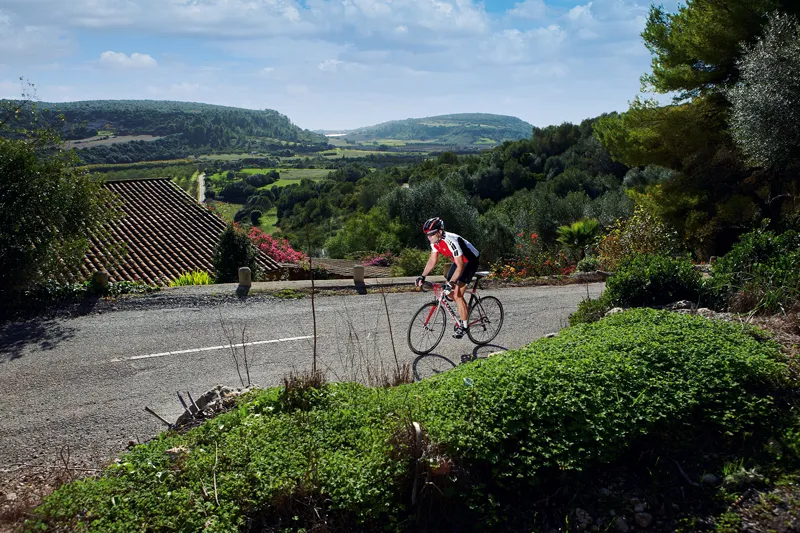
After a few short sprints on the small chainring and some full-gas accelerations on the biggest possible gear, I had a great impression of the 695 SR’s performance. The all-carbon LOOK stem and FSA SL-K handlebar combination was stiff enough but still couldn’t match the power transfer offered by the frame.The Fulcrum Racing Zero wheelset is reasonably light and at the same time strong enough to make them everyday riding wheels. They accelerate briskly so by the time I arrived at the Camino de Sa Vall, where the traffic disappeared, I'd got really into the ride.
Between milestones seven and eight (okay, 'kilometre stones' here) the aged road surface is pretty bumpy and I really felt the comfort offered by the E-Post. It’s a great way to ensure the best performance with good comfort as the elastomer smoothes the bumps and vibrations while the frame can be focused on maximum stiffness for pedalling. You do get a bit more buzz in the handlebar and pedals but, because I’m used to high-end race bikes, I'd always opt for the SR model, even without ever riding the standard 695. It just felt so right!
At the end of the valley, there's a steep 1.5km climb with incredibly sharp switchback turns waiting. I remember that on this road, some time around 1997, I was in the leading break of a local race while still a pro. A young, and then still amateur, Andreas Klöden took the climb on the big ring and dropped the rest of the group, including two of his team-mates.
Rarely in my career did I suffer as much on someone’s wheel but I managed to stay with him. It was the only time I’d ever ridden up there in the big ring. The 695 now inspired me to try again. I carried as much momentum as possible into the first two steep hairpins and took advantage of the 51-tooth chainring fitted to this bike. The chainline was far from perfect, though the Shimano Dura-Ace equipment kindly forgave me the 51/23 combination.
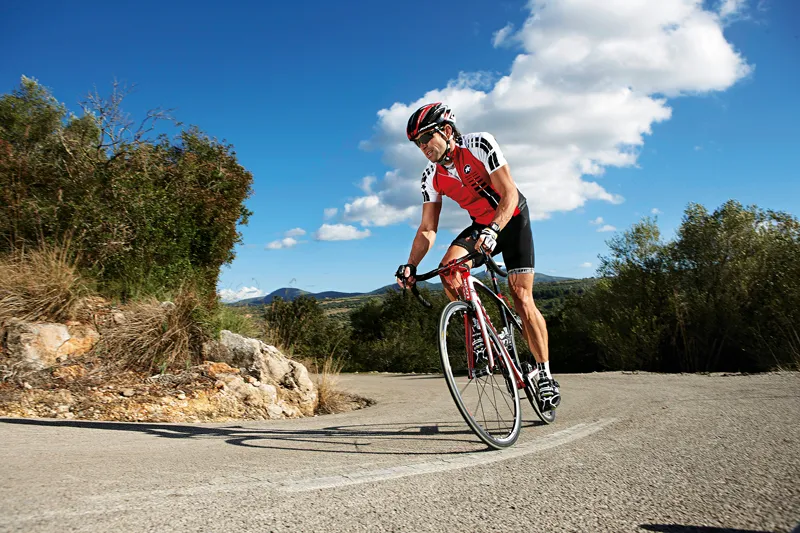
After about a kilometre, the road flattens out a bit and I'd made it. I was probably a minute slower than 13 years ago on Klödi’s wheel but Sa Vall on the big ring is an achievement anyway. Because the descent to Petra is on a rather big road, I did a U-turn at the top and shot down the same road for some action. Knowing every inch of a road helps a lot when descending on the rivet but even more helpful is a stiff and predictable handling bike.
The LOOK was great fun and even when skidding the back wheel a bit after late braking manoeuvres it’s easy to get back under control. The two switchbacks near the bottom, only about 20 metres apart from each other, are a really tough technical challenge for bike and rider alike so I repeated the pair five times. Railing around the fastest line was never a problem and the frame responded to my aggressive inputs instantly and accurately every time.
A very important factor when trying to gain time on a descent is the braking performance. The Dura-Ace callipers have some serious bite and, when combined with the alloy surfaces of the Fulcrum wheels, you get the accurate dosage and power needed to attack switchbacks with full commitment. The new HSC 7 fork, a one-piece carbon monocoque with a claimed weight of 295g, is lighter and stiffer than the previous model. Its rigidity was particularly noticeable when I burned down the hill.
The stiffness reminded me of the LOOK KG 196 frame i rode when with Peter Post’s Histor Novemail team in 1993 and '94. We had a choice between the light, but less rigid, lugged KG 171 and that 196 early monocoque which was the top of the food chain back then. Considering that the new 695 SR I rode in Spain is the second lightest production frame on the market today at only 900g including the seatmast, it isn’t a surprise that the 1,500g KG 196 of the '90s was as stiff. Another parallel to the old bike is the adjustable cockpit. The C-Stem was designed especially for the 695 and can be angled from -9˚ to 13˚.
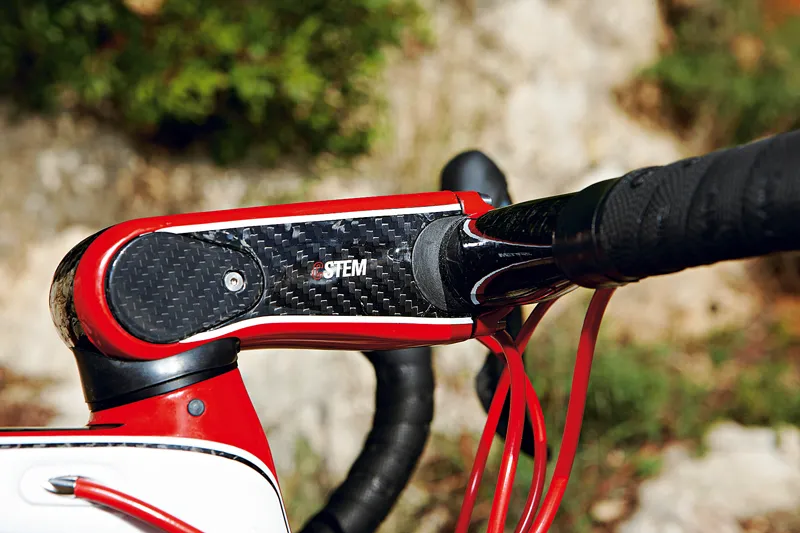
As I rode the climb for the last time I had the rare experience of the small drop between a 51t and a 42t chainring. It’s an unusual combination these days and you definitely need the legs for it when riding in the mountains. However, on my undulating course I really loved it. Once over the top I had a long straight with a tailwind where I did a few more tempo sessions. Here, as I reached for its limit, the LOOK again pushed me to mine.
Then, just as I was tiring and facing a slog back into a headwind, I finally met some other cyclists. They were Spanish amateurs on their training ride, doing a 70km recovery lap, and the discussion about the design of the LOOK started right away. I definitely like the idea of more parts of a bike being integrated but these guys were really old fashioned and conservative. It’s too vivid, they said, and too much hassle to change the internally routed cables.
Okay, not everyone likes avant-garde but on the LOOK 695 SR I could really feel the advantages of the system integration concept that was started by Cannondale in the '90s with their SI crankset. This is a great bike, one of the best engineered professional tools on the market, and one of the most beautiful as well. These Spanish guys didn't agree? Well, tastes are different, but they took me a good 35km through the headwind when my batteries started to run low, so okay, think what you like muchachos.
Bike specifications
- Frame: LOOK 695 SR
- Fork: LOOK HSC 7
- Groupset: Shimano Dura-Ace
- Crankset: LOOK ZED2 170-175mm
- Chainrings: 51/42t
- Cassette: Shimano Dura-Ace, 12-23t
- Wheels: Fulcrum Racing Zero
- Tyres: Hutchinson Fusion 2 Kevlar Pro Tech
- Stem: LOOK C-Stem
- Headset: LOOK Head Fit3
- Handlebar: FSA SL-K Carbon
- Seatpost: LOOK E-post
- Saddle: Fizik Arione CX
- Weight: 6.8kg, as tested
- Price: £5,099.99 (SRAM Red, SRAM AL30 wheels) / $5,500.00 (I-pack frame kit only)
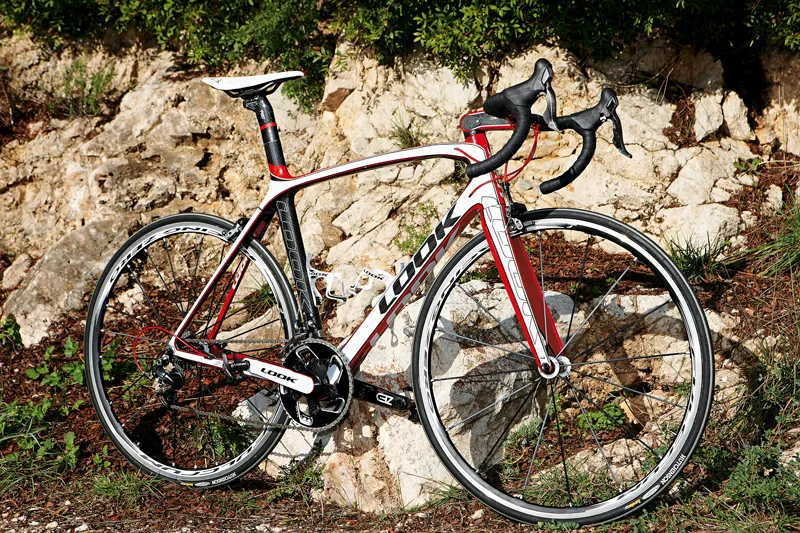
The new 695 is a fantastic looking bike: the new 695 is a fantastic looking bike
About Marcel Wüst
During his career as a top sprinter, Marcel won stages in all three major tours. A bad crash in 2000 forced early retirement. He now works as a journalist and television pundit, as well as running cycling camps from his base in Majorca, Casa Ciclista. The 43-year-old stays enviably fit and pushes every test bike to its limits.
The inside track
LOOK engineers Matthieu Lanz and Sebastian Servet talk about the 695 SR’s frame...
What do you think is the most significant evolutionary advance of this frame?
In the past, we made carbon fibre frames with one of two processes – bladder moulding and 3D forged carbon. On the 695, we merged both concepts. Our 695 moulds are more complicated than before but allow for a monobloc 3D compression structure where more stiffness and strength are required.
You’ve already integrated the stem, seatpost, bottom bracket and crank. What more is possible?
Nothing is impossible and only the best innovations are emerging because it takes us time to produce the best items at a good price. We first thought of the ZED crankset eight years ago and started engineering three years before its launch so we have many more products on the way.
The 695 SR delivers both lightness and performance. Is this what the Cofidis riders asked for?
Yes. A big part of our job is to work with pro riders and translate our technical features into what they expect from a race machine.
Was the BB65 bottom bracket necessary to fit the cranks through or was it considered the right size anyway?
We knew that making a monobloc crankset would be our best way to build in lightness without compromising strength and stiffness. The conclusions to our testing process were not surprising – increasing the diameter of the bearings helped us design a full monobloc crankset, optimise the stiffness and improve the aerodynamic shape of the frame.
How did you go about making one of the lightest frames in the world?
By changing the way we thought of weight and considering that the total weight of a bike is more important than manufacturing just the lightest frame on the market. For instance, we preferred adding some precious grams to the frame due to headset integration because we saved more than 30g on the Head Fit system and also increased both stiffness and steering precision. Innovations such as these resulted in a lighter bicycle even though the frame was slightly heavier.
